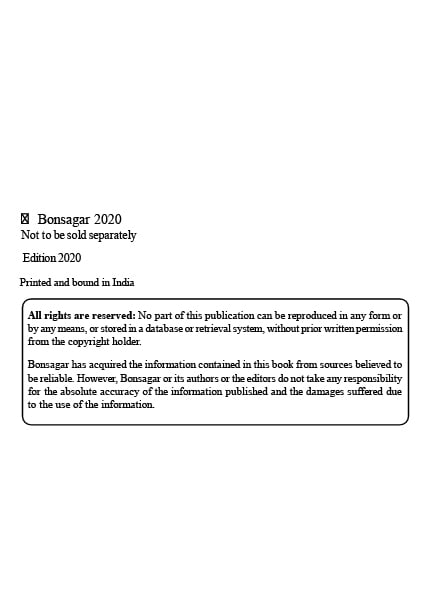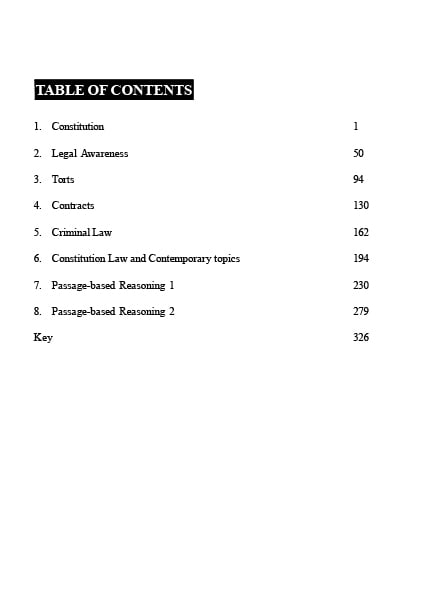
Getting Answers Correctly versus Getting More in CAT
In improved terms, propositional rationale utilizes a progression of realities and thinking to foster an end. Inductive and deductive thinking are the two types of propositional reasoning. To be more precise, inductive thinking is the thing that we usually allude to as the “base up” approach of tackling an issue, while deductive thinking is the “hierarchical” way of thinking. Inferential thinking is named so because it goes from general and works its direction down more explicitly. Sounds recognizable? Our cerebrums are so tuned to be deductive that we only occasionally like its actual brightness. It is likewise what assists us with purposefully killing decisions introduced to us consistently.
The widespread suspicion when showing up for CAT is that you have a higher shot at scoring better if you answer more inquiries. Toss this irrational and incapable thought out the window. An expanding number of correct answers is the way into a higher percentile.
The question is:
How does this have an impact while responding to inquiries in CAT? Essentially because it means an exacting strategy for the end of decisions. At Abhyaas, we separate an optimal competitor’s manner of thinking into five direct advances:
Stage 1: Scan the segments to isolate inquiries in degrees of trouble: simple, moderate, precarious.
Stage 2: Answer every one of the simple inquiries. Continue to a higher level.
Stage 3: Arriving at the moderate level, here is the place where dispensing with choices is genuinely tricky. Check out the most unbelievable decisions. Could you get rid of them right away? Then, since you are left with fewer choices, revaluate the rationale asked in the question type.
Stage 4: After reconfirming the rationale that MOST follows the data given and arriving at a substantial resolution, select the right choice. Advance to a higher degree of trouble.
Stage 5: To make quick work of the trickiest inquiries, consolidate the two styles of thinking. For example, assemble a contention utilizing the realities you know and have polished and use the data given in the question to deduct the arbitrary decisions. It thus leaves you with the foremost best decision. It does not just assist you with recognizing the snares, assuming any, however effectively conquer them easily.
The sheer brightness of these means is how comprehensively material they are to ALL segments of CAT. With enough practice and conservative ideas, you can also dominate this procedure and breeze through any adversity. For different tips and deceives, visit how to break non-MCQ inquiries in CAT!
Test-takers starting to read for the CAT regularly wonder about the test’s percentiles. Right now, you might be inquiring, “The number of CAT questions should I endeavor to score inside the 80 percentile?” Unfortunately, because of the CAT’s remarkable scoring framework and the idea of percentiles, this doesn’t convert into basically addressing 80% of inquiries accurately. Furthermore, because there aren’t fitting answer punishments, the number of CAT questions you should endeavor to score inside the 80 percentile will depend on how you respond to them. Generally speaking, you’ll need to endeavor something like 31 and at most 92 inquiries to hit the 80 percentile; however, we’ll dive into more detail on limiting this down, dependent on your test-taking abilities.
As a last note, recollect that while it’s incredible to arrive at your objective percentile, IIMs like a somewhat even circulation of focuses over the three areas. For instance, this may mean (scaled) scores of 33, 22, and 36 in the three segments of the CAT for that complete of 91. So if your scores are disproportionate in favor or against a specific part (and most test-takers are), try to focus on your groundwork for your more vulnerable areas. Like this, you’ll be well headed to setting in the CAT percentile you had always wanted!
Purposes behind Scoring Low in CAT Mocks
The mock tests are a piece of your web-based CAT arrangement expected to set you up for the genuine CAT 2021 test. They are intended to be more complex than the CAT test. The philosophy behind this is to provide you with the possibility of the base percentile you can score. Also, scoring low persistently in CAT mock tests is, to a greater extent, a gradually expanding influence. A few applicants continue to deteriorate with each false test debilitating their CAT test arrangement. It is because they surrender to pressure and get demotivated.
Scoring low in mock tests for a delayed timeframe can be difficult for a portion of the understudies. However, mulling over the thing is turning out badly in their false tests can shoot their percentile up. Subsequently, low scores ought not to be considered as a hindrance. Zeroing in on what turned out badly and how you can improve will assist you with acing the CAT test series.
1. Give Your Mocks Frequently
Endeavoring enough ridicules is the ideal way of planning for the CAT 2021 test. It would help if you got going with the simpler derides and afterward progress towards the troublesome ones. It will assist you with acquiring certainty and increment your presentation. Giving around 3-4 taunts each week will provide you with a happy opportunity to make do upon your vulnerable regions. Be that as it may, the quantity of ridicules given doesn’t make any difference alone. Applicants should endeavor an assortment of inquiries to refute the chance of shock inquiries in the CAT 2021 test. In case you are searching for CAT instructing close to me to give taunts, Endeavor Careers has got you covered. You can test your planning by taking the All India Endeavor Open Mock in the coming weeks.
2. Examine Your Mocks
Investing energy in giving mock tests is an all-out squander on the off chance that you don’t investigate them. Investigating the CAT mock tests conveys more significance than different parts of your CAT Preparation. It assists you with understanding your setbacks and devising another procedure. An ideal go through of your CAT taunts ought to be in 3 stages:
Wrong Questions:
1. Analyze the inquiries that turned out badly from estimates and senseless blunders.
2. Address them again, alluding to the correct answers, or take help from your web-based CAT training staff.
3. Dissect why you misunderstand them and make an effort not to rehash similar missteps.
Unattempted Questions: Categorize the possible and non-feasible inquiries among the unattempted questions. Settle this load of queries in limitless time and with an answer too close. It will work on your determination of searches, and you ought to have the option to address them in additional tests.
Tedious Questions: The CAT mock tests may have a few tedious inquiries. Allude to the arrangements and sort out a superior and quicker way of taking care of such issues later on.
3. Zero in on Improving Accuracy
Exactness is a critical factor that can radically further develop your CAT percentile. The odds of scoring a decent percentile are high on the off chance that you arrive at an exactness level of 90%. Feline counterfeit tests empower you to rehearse more inquiries and break down your mix-ups. Giving more taunts will work on your precision and speed simultaneously.
4. Set Weekly Milestones
Setting achievements propels you and helps in adjusting your needs. You can define your objectives as far as your CAT mock grades. The point ought to be to develop the scores further every week. An ideal way of carrying out this is to report your objectives, accomplishments, and disappointments. On the off chance that the scores aren’t improving, you wanted to re-plan your arrangement plan. The achievements likewise assist you with adhering to the CAT 2021 arrangement plan. Getting steady with your readiness plan assumes an essential part in further developing scores.
5. Overhaul Your Strategy
While you make your CAT arrangement online among lakhs of understudies, ensure your procedure exceptionally obliges your objectives. Adhering to a well-established readiness procedure for the CAT 2021 test holds no worth if it doesn’t give you the expected outcomes. One system can go through the inquiries first, pick which ones to reply to, and tackle them afterward. Another methodology can be to go on successively. Utilize beginning derides to explore different avenues regarding diverse test systems. At long last, decide on a method that works the best for yourself and adhere to that on the D-day. Asides, a 1-on-1 conversation with mentors or specialists would help the reason.




